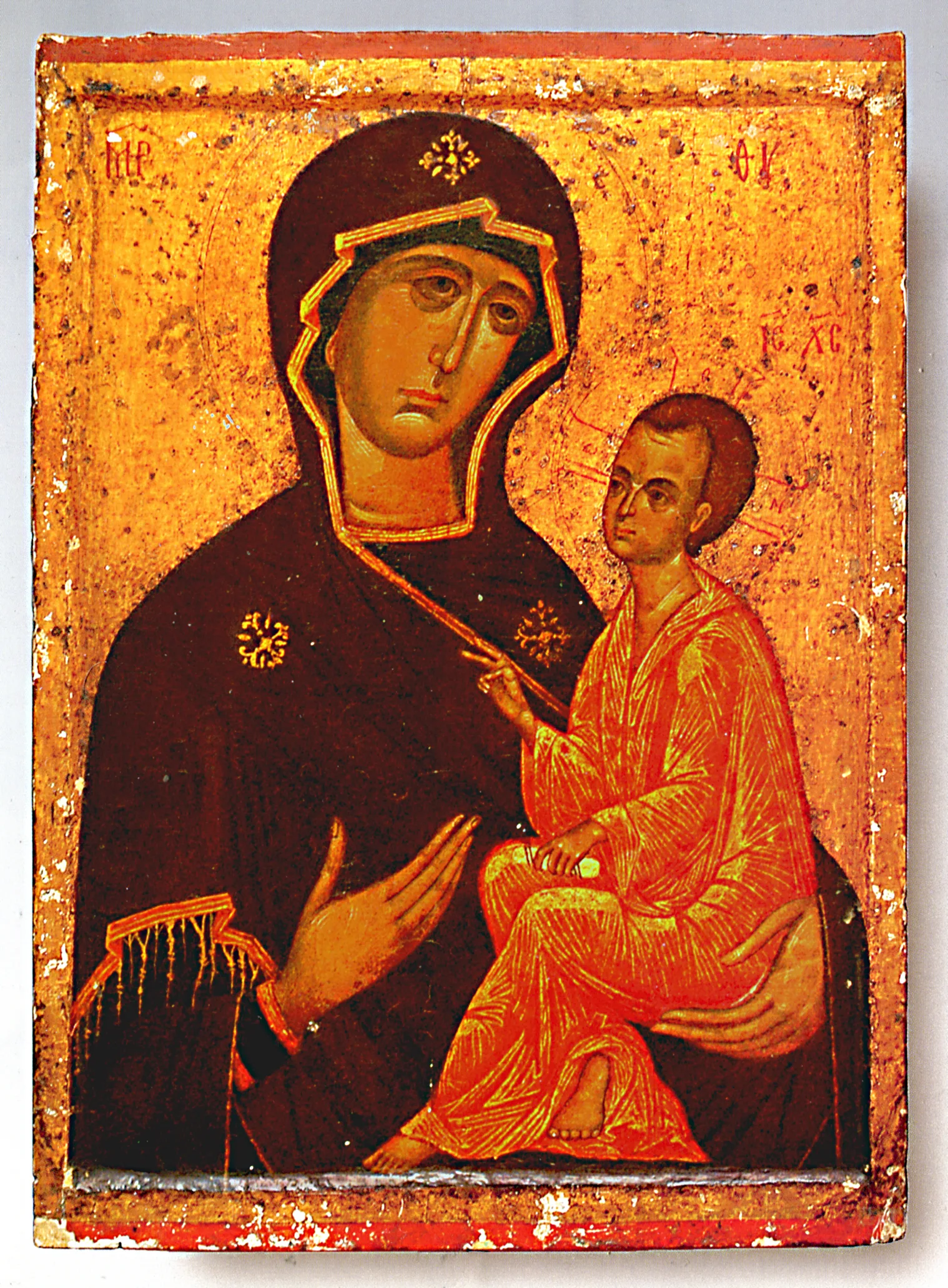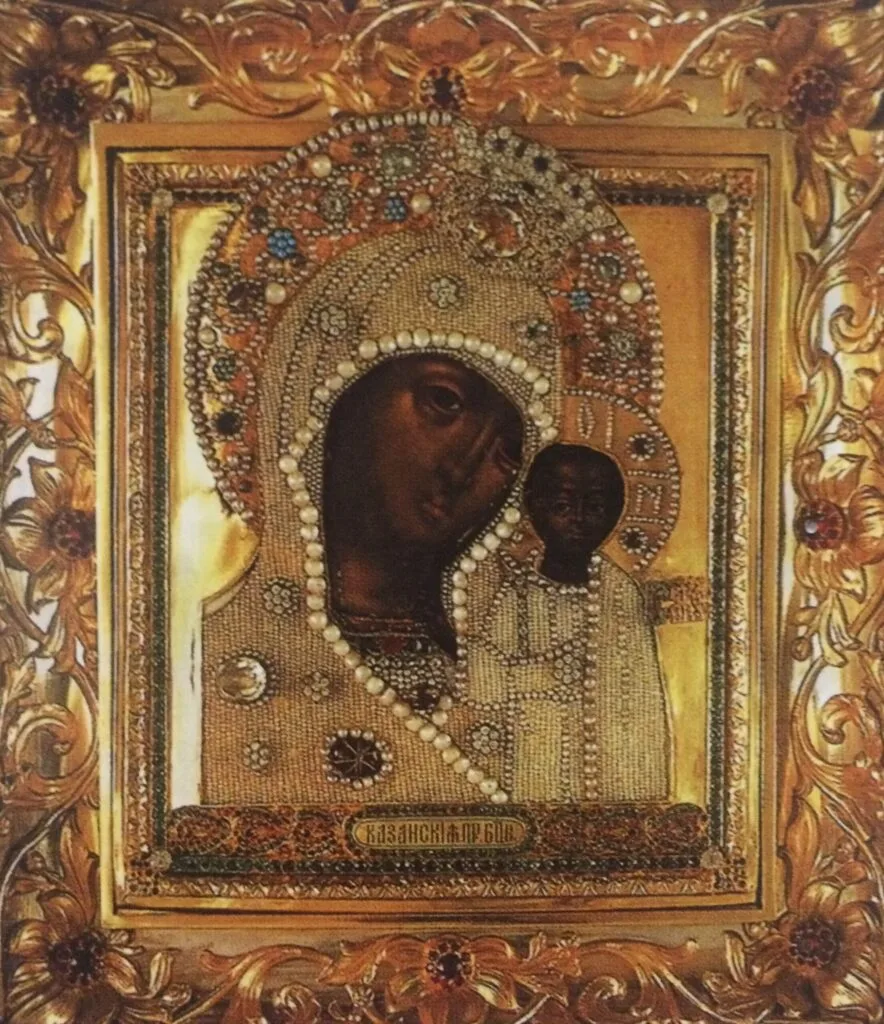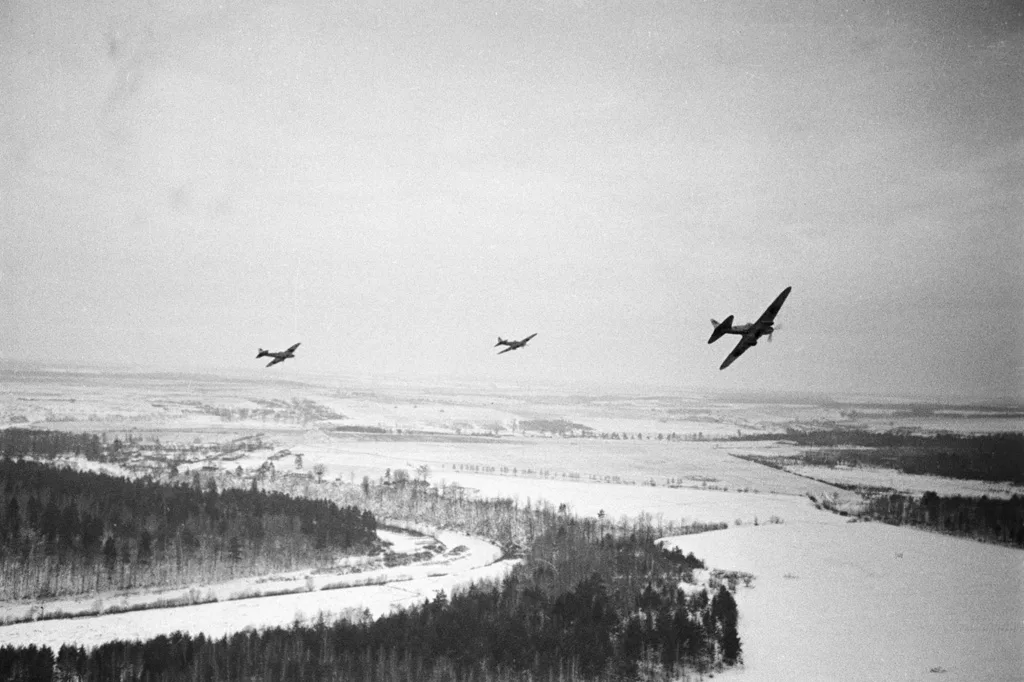There is a widespread legend that during the Great Patriotic War, an unusual ritual was performed to defend the capital of the USSR - an icon of either the Tikhvin or Kazan Mother of God flew over the city on an airplane. We checked whether this legend has confirmation.
This story often appears in modern stories about the war and the participation of the Russian Orthodox Church in it - it is argued that thanks to the execution of Stalin’s order, who decided to turn to the Orthodox shrine for help, the advance of Hitler’s troops miraculously stopped. The plot is mentioned as a historical fact in the press (for example, in the materials “Express newspapers" and TV channel "World 24"), presented on a mosaic in the Main Church of the Armed Forces of the Russian Federation in the Patriot Park near Moscow and formed the basis for the script of the feature film "Maria. Save Moscow"(2021), filmed with the support of the Ministry of Culture of the Russian Federation and the Russian Military Historical Society. As part of the promotional campaign for this film about a flight with an icon around the capital in December 1941, active told largest state and pro-government Russian media.
The earliest mentions of the history of the air procession over Moscow during the Great Patriotic War are found in the works of a writer and historian of the Russian Orthodox Church Peter Palamarchuk. In 1981, in the emigrant almanac “Russian Renaissance” published in New York, he published under the pseudonym G. Ekhlakov article about the Kozelshchansk Icon of the Mother of God. At the end of the article, discussing the change in the policy of the Soviet government towards the church during the war, he noted: “Frightened to death, Stalin tried to use the patriotic position taken by the Russian Orthodox Church for salvation, and even, as they say, sent a plane with the Tikhvin Icon of the Mother of God on board to fly around Moscow.”
Later, in 1988, in the first volume of the publication published in Paris under the pseudonym Semyon Zvonarevforty forty”—the most complete history of churches and monasteries in Moscow at that time—Palamarchuk again cited the same story. At the same time, he clarified that what was carried on the plane was not the original Tikhvin icon (it was kept in Tikhvin, from where, after the occupation of the city by the Wehrmacht in 1941, it was taken to Pskov, and later abroad and returned only in 2004), but its copy (list), stored in the Moscow Tikhvin Church in Alekseevsky, which was never closed in Soviet times. Palamarchuk referred to the story as a “contemporary legend,” without indicating where he learned it from.
Probably, it was from the foreign publication “Forty Forty” that the story was borrowed by journalist Nikolai Malinin, who included it almost verbatim in published in January 1991 in the magazine “Capital” the material “Moscow from under the table. The history of the city in legends, anecdotes and typos." It was only because of an error or typo that Malinin’s Tikhvin Church became Tikhon’s Church.

Soon, in 1992, “Forty Forties” was published for the first time in Russia, already under the author’s real name. Obviously, it was thanks to publications in a popular magazine and book at the time that the story of the flight over Moscow with the icon became widely known, especially in Orthodox circles. It is important to note that at that time it was spread precisely as a legend or legend, which, in principle, removed the question of the need to provide evidence or sources. As a legend, the story is also mentioned in the article dedicated to the Tikhvin icon in the fundamental “Orthodox Encyclopedia"(vol. 68, pp. 363-364). By words historian Mikhail Shkarovsky, author of a number of works on the Russian Orthodox Church in the twentieth century, the story “is not based on real events.”
In April 2005, it was published on the Utro.ru portal note, in which the memoirs of Valentin Vladimirov, who allegedly served in the Kremlin security in 1941, were cited as evidence of the authenticity of the flight with the icon. He recalled how one day a car with three priests with beards and crosses drove past the post at the Borovitsky Gate, and only later did it become clear why. A few days later, the Douglas plane took off with the icon of the Kazan Mother of God and flew around Moscow three times.”
Judging by the database of participants in the Great Patriotic War "Memory of the people“, Vladimirov is a real veteran, awarded, in particular, the medal “For the Defense of Moscow.” Moreover, the only evidence of the existence of his memoirs that could be found is recording in the catalog of the Orsk library, which indicates that the book was published in this city in 2004 privately (the publisher was not named) and had a small volume of 115 pages. It was not possible to check whether there is a quote published on the Internet in this book. But even if it really belongs to Vladimirov and he remembered the real event, the departure of a car from the Kremlin with people dressed as Orthodox clergy does not directly confirm the story of the flight around Moscow with the icon.
Although Vladimirov, presenting his version of events, mentions not the Tikhvin, but the Kazan Icon of the Mother of God, it was also not kept in the Kremlin. This revered image back in 1918 kidnapped from the cathedral dedicated to him on Red Square, and since then his whereabouts have been unknown. The most famous copy of this icon after 1938 was in the Yelokhovsky Epiphany Cathedral in the Basmanny district of Moscow. There were no other icons revered by Orthodox Christians in the capital at that time - the Vladimir and Donskoy, since both were transferred to the Tretyakov Gallery before the war and in the fall of 1941, along with its funds evacuated to Novosibirsk, where they remained until the end of 1943.

Somewhat later, the Orthodox writer Nikolai Blokhin became an active propagandist of the story of the air procession. He turned on this plot into his novel “Frontier” published in 2006. Five years later in interview To the Russian People's Line portal, Blokhin provided a number of additional details that he allegedly heard in the summer of 1952 (when he was six and a half years old) from a direct participant in the flight, later the chief marshal of aviation of the USSR Alexander Golovanov, as well as Stalin’s son Vasily. Blokhin's father at that time served as a rider at the Moscow hippodrome, and racing enthusiasts Vasily Stalin, Golovanov and other military men were friends with him. Blokhin’s story contains a number of supernatural details (despite the blizzard raging over Moscow, the view from the plane was “like in Kuindzhi’s paintings,” the engines worked completely silently, so Stalin in the Kremlin on the radio could hear the singing of the priest and singers on board) and was repeatedly reviewed critically on the Internet. Priest Nikolai Savchenko showed, in particular, that Blokhin’s description of the weather on December 8, 1941 radically contradicts the surviving reports, Golovanov physically could not fly the PS-84 aircraft (American Douglas) alone, and Stalin in the Kremlin could not listen to the broadcast from on board. In addition, it is known that Marshal Golovanov was not friends with Vasily Stalin, and therefore it is incredible that they spent time together at the Moscow hippodrome.
Finally, in May 2017, in a number of Russian media (for example, on the websites of the newspaper “Sight"and TV channel NTV) another story about an air procession appeared. All publications referred to the TASS agency, but the original message could not be found in its feed (perhaps it was promptly deleted or was present only in a non-public feed). All versions cited the story of a certain Vladimir Kindyuk, a native of Odessa, who in 1941, at the age of 16, allegedly personally participated in this operation as a pilot. According to him, six I-16 fighter planes were involved, each of which contained a pilot, a radio mechanic and a priest with an icon and some kind of brush (apparently sprinkler). The planes flew over Moscow along six routes, for which special radio beacons were installed on the ground. As a result, allegedly “the German never once went beyond those lines, those borders that were then consecrated.” The story was soon criticized as containing obvious gross errors. In particular, the I-16s in service with the Red Army at that time were single and either had no radio communication at all, or it worked extremely poorly. In addition, neither in the most complete database “Memory of the People” nor in any other sources was it possible to find information about war participant Vladimir Borisovich Kindyuk.

So, we can state that there is no documentary evidence of the flight over Moscow with the icon on the orders of Stalin in 1941. Numerous military memoirs are silent about this, for example, the same Marshal Golovanov. There were Orthodox believers among the soldiers and perhaps even some members of the command staff of the Red Army, but the official anti-religious policy of the Soviet authorities began to change only after Stalin's meeting in September 1943 with three metropolitans of the Russian Orthodox Church. At the same time, according to published detailed magazines with the list of people whom Stalin received, in October-December 1941 he did not meet with any clergy.
The only thing that attracts attention is that on December 7, at a reception with the Soviet leader, there was a pilot, a participant in intercontinental flights, Mikhail Gromov. He gave details of that day in his memoirs. According to them, Gromov himself asked for a meeting with the Soviet leader to report on the results of his business trip to the United States. Stalin, in turn, offered Gromov the position of commander of an air division on the Kalinin Front, to which he agreed. Gromov makes no mention of flying over Moscow with the icon.
It cannot be ruled out that it was the meeting of the leader with the famous pilot that became one of the impetuses for the emergence of the legend of the air procession. Its other origins seem quite obvious - the liberation of Tikhvin on December 9, 1941 became first major success Red Army and received great resonance. And for Orthodox believers, this city in the Leningrad region was associated primarily with the revered icon of the Mother of God. On the other hand, how noted back in 1997, folklorist Elena Levkievskaya, the legend of an airplane flying over a city with an icon on board is similar to the ritual of creating a magic circle around a populated area to protect it from danger - a ceremony that has ancient Indo-European roots and has been repeatedly described in scientific literature.
Cover photo: Sergei Strunnikov via Wikimedia Commons
- J. Cormina. Political characters in modern hagiography: how Matrona blessed Stalin
- D. Pospelovsky. Stalin and the Church: the “concordat” of 1943 and the life of the Church
- Is it true that Andrei Rublev’s “Trinity” is the greatest Orthodox shrine?
If you find a spelling or grammatical error, please let us know by highlighting the error text and clicking Ctrl+Enter.






